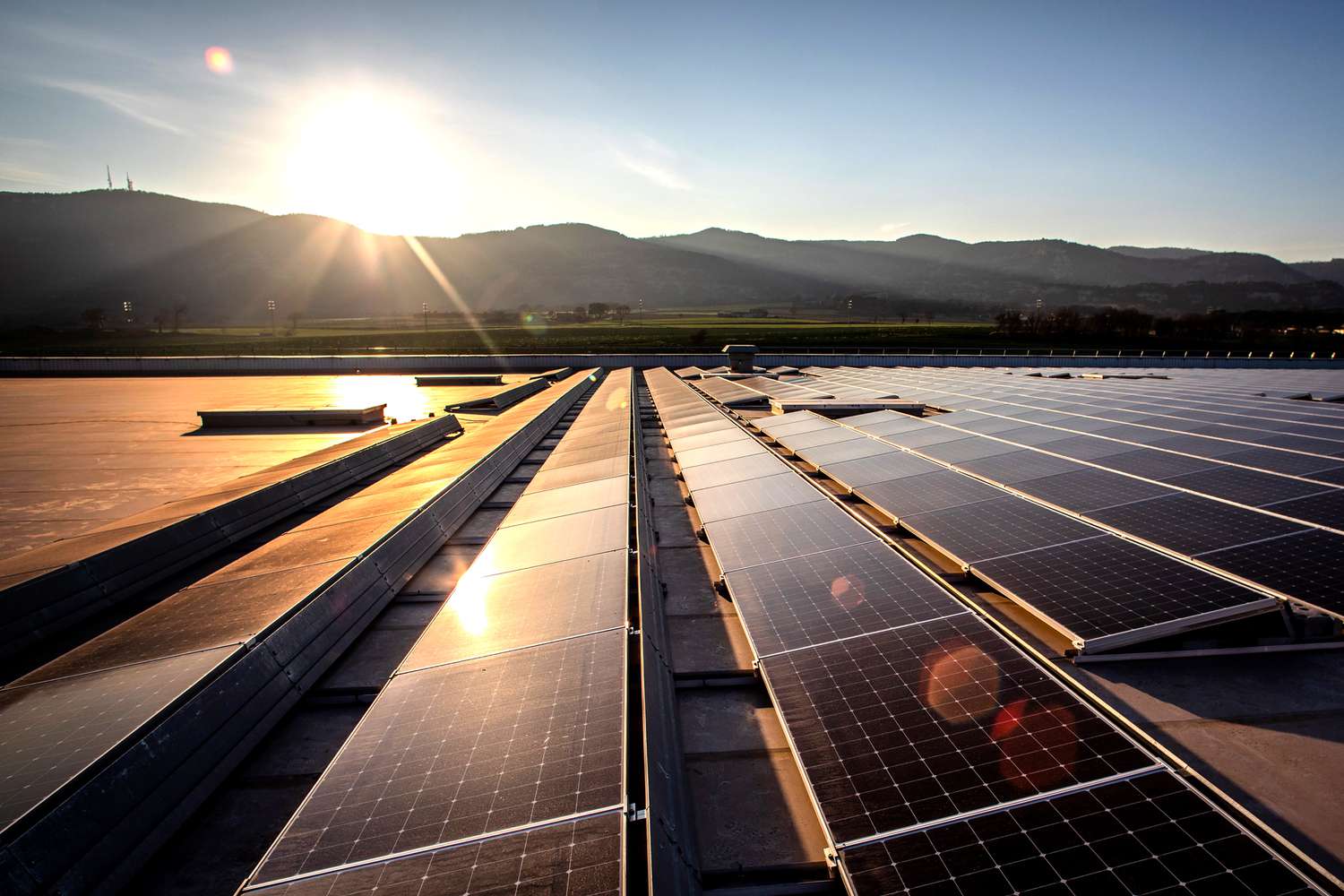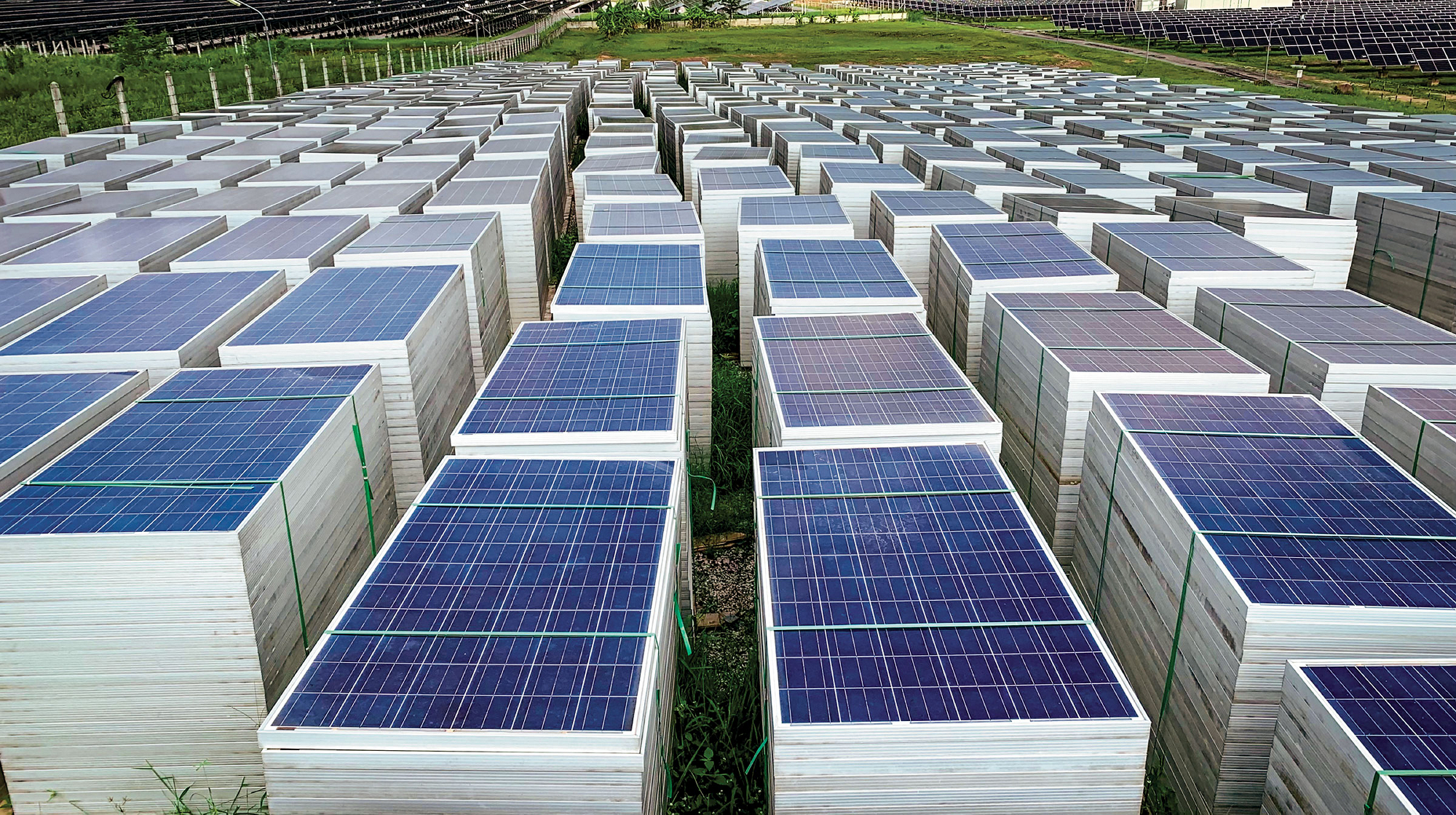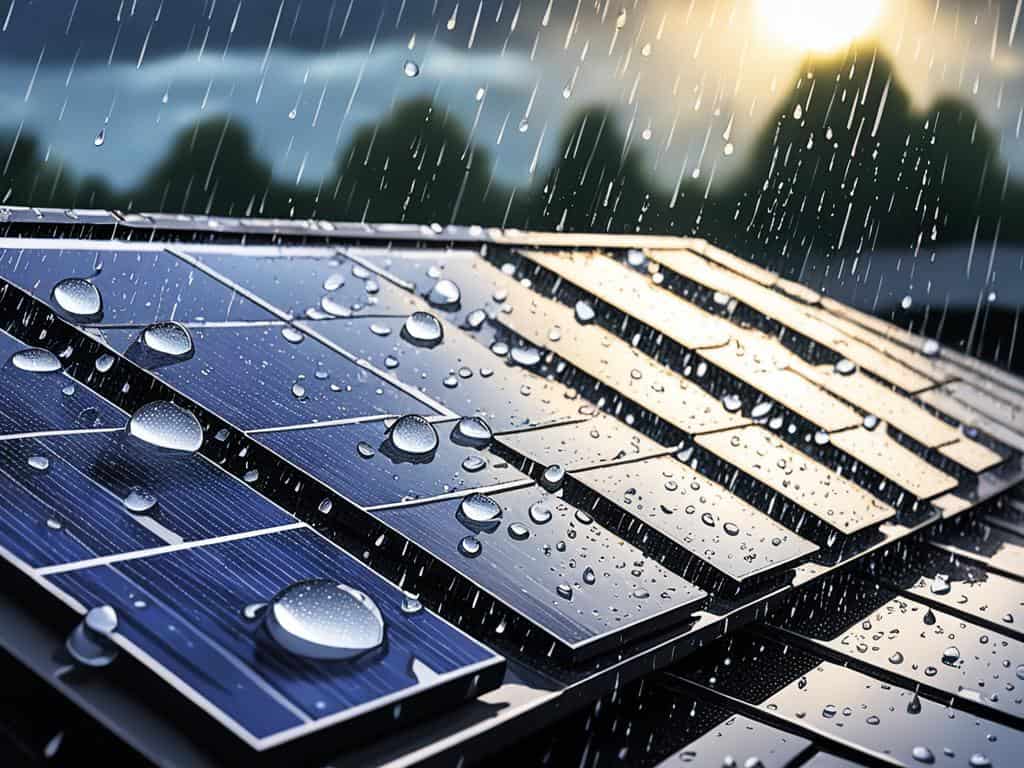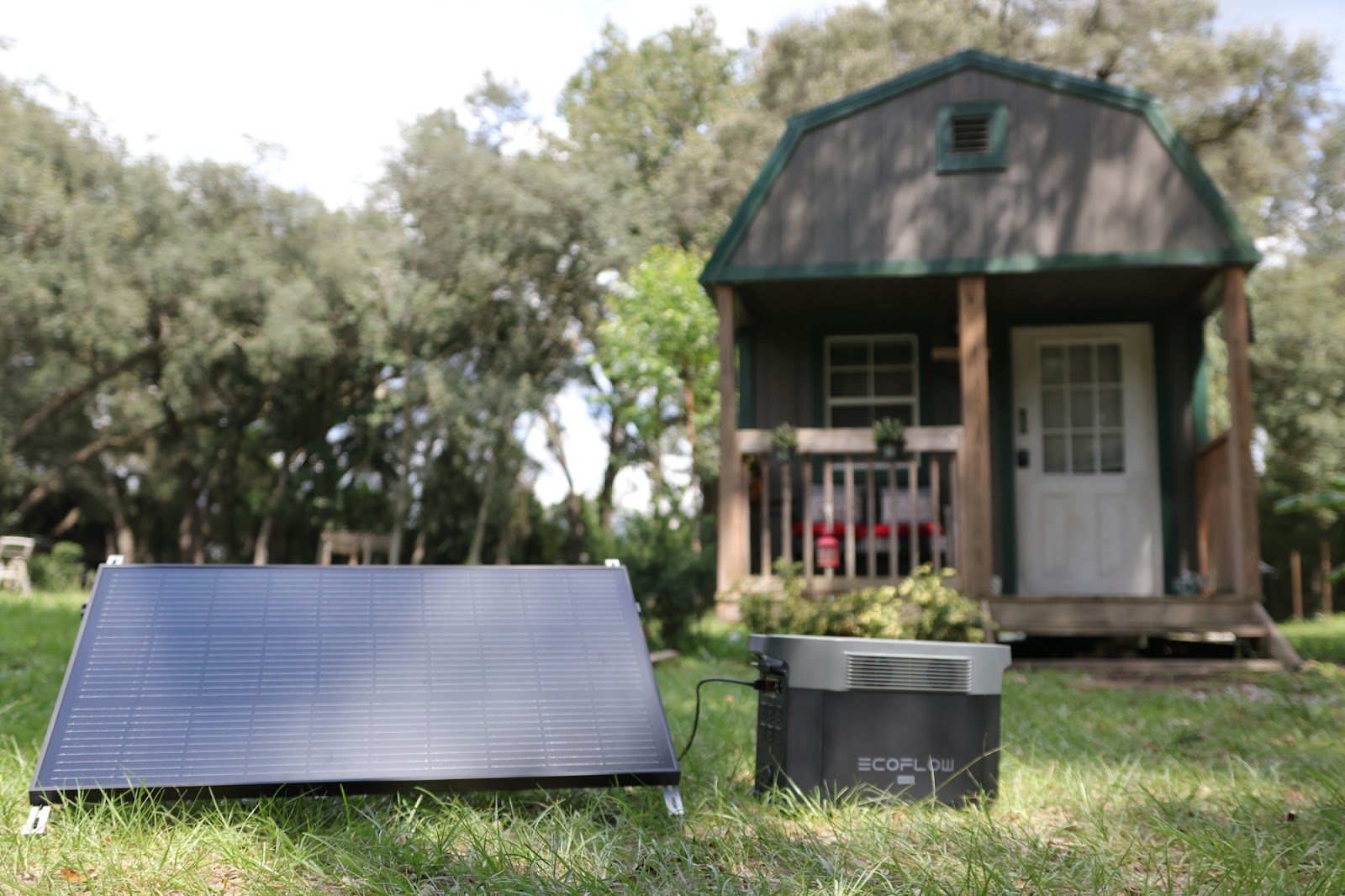High-wattage solar panels are usually rated in the range between 400W and 450W and have a new frontier in PV technology to work toward maximizing energy production. These also offer space-saving and long-term cost advantages over conventional models at 300W or less that generate more electric power per panel. How these high-watt panels increase energy efficiency, from the role of advanced photovoltaic technology through to AC-to-DC power conversions and installation design-supported by data, examples, and quantitative insights-is the focus of this article.

What Are High-Watt Panels?
High-watt solar panels vary from traditional ones mainly in wattage output that is achieved by using more efficient solar cells and innovative materials.
l Panel Types and Materials: Many high-watt models base their efficiency on monocrystalline silicon cells, which could explain why the efficiency is above 20%, beating the records of polycrystalline and thin-film technologies. For instance, in the model SunPower Maxeon 6 (435W), the efficiency reaches 22.8%, one of the highest on the market.
l Higher Energy Density: While the average for such high-watt solar panels stands at 22.8% efficiency, a high-watt solar panel produces approximately 228 W/m² at standard test conditions, assuming 1,000 W/m² irradiance. In comparison, a 300W panel at 18% efficiency produces a puny 180 W/m² under the same conditions, representing a formidable improvement in the power-to-area ratio.
Higher energy density thus means a reduced number of panels to achieve the same energy needs. While a 5 kW system requires 12 high-watt panels (400W), 17 panels of 300W were needed and saved material costs along with space for installation.
How They Boost Efficiency
High-watt solar panels are more efficient due to new conceptualizations in the design of photovoltaic cells, among other things, and more efficient power conversion systems.
l New photovoltaic cell technologies are being developed. Most of the high-watt panels feature PERC technology- Passivated Emitter and Rear Contact-a reflective layer that bounces unconverted light back into the cell for better capture of photons. This design allows an increase of cell efficiency by 1 or 2%, important for places where sunlight changes frequently.
l Temperature Coefficient: The temperature coefficient of higher Wattage panels tends to be better. Take the case of the LG Neon R 440W, which has a coefficient of -0.30%/°C. This means that this panel, for each degree above the ideal temperature of 25°C, loses only about 0.30% efficiency. This compares fairly well with regular panels, which can have coefficients as high as -0.40%/°C.
l Better Power Conversion Using MPPT Technology: Most of the solar systems convert DC, which is generated by panels, into AC for home consumption. High-watt panels, when combined with MPPT inverters, keep peak power output under partially shaded conditions and increase the annual yield by 5-7%.
For example, a system with 20 high-watt panels (400W) and MPPT tracking would be able to produce 8,400 kWh per year under optimal conditions, while the same number but with 300W panels could yield only 6,300 kWh.
Less Space, More Power
Probably the most important positive for high-watt solar panels is the fact that they provide a higher power output with a limited installed area and are thus ideal for urban rooftops or commercial areas.
l Savings from Roof Area: With increasing power per panel, the number of panels owners need to attain a certain energy output decreases. For example, if one is installing a 10 kW system, it would require 25 panels at 400W compared to 33 panels at 300W. This reduces the area on the roof needed by about 25-30%.
l Weight Considerations: While the high-watt panels are somewhat larger and heavier, their lower number minimizes the total installation effort. For example, 25 high-watt panels (435W) would weigh about 650 kg, while 33 standard panels (300W) would weigh at about 825 kg-about a 20% lower total weight.
This means that the high-watt panels are perfect for installations with constrained space and structural load-carrying capacity, including older structures or lightweight roofs.
Impact on Energy Bills
Higher the efficiency, higher the energy savings, hence utility bills reduced by a larger margin in its lifetime.
l Energy Generation Example: Assuming that an area receives an average of 5 peak sun hours per day, a single 400W panel can produce approximately 2,000 kWh per year. In comparison, with the same conditions, a 300W panel would generate only 1,500 kWh yearly.
l Savings over time: At a rate of $0.12 per kWh, the extra 500 kWh created by each high-watt panel results in annual savings of $60 per panel. For a system with 10 panels, that is an additional $600 per year in savings that would add over $15,000 with inflation and increased energy costs over the course of 25 years.
In addition, households with high-watt panels reach net-zero energy consumption much faster by offsetting more grid electricity, thus continuing to reduce demand on fossil-fuel-based generation sources.
Comparing Panel Wattage
No doubt, high-watt solar panels surely perform much better; however, when it comes to choosing a system, one needs to know the trade-offs between cost, efficiency, and ROI.
l Efficiency Gains: A panel with an efficiency rating of 22%, like the SunPower Maxeon, will generate 10-12% more energy in a year than one with a 19% efficient rating. This could equate to 300-500 kWh more in electricity per panel per year, depending on location and weather.
l Price vs. Value: Higher-wattage panels will run in the range of $1.20 to $1.50 per watt, whereas lower-wattage panels will be in the range of $0.90 to $1.00 per watt. In many cases, the savings from the much-reduced number of panels in a system - along with the associated installation hardware required - pay for the higher upfront investment long-term.
For instance, installing a 6 kW system with 400W panels can save upwards of 15-20% on installation labor costs due to fewer numbers of panels and mounting hardware required.
Installation Considerations
Installation remains paramount for the best performance of high-watt solar panels. These are designed with a number of tweaks in their electrical configuration and system alignment.
l Changes to Electrical Design: High-wattage panels operate at higher voltages, which can exceed 40V per panel. For that reason, it will be necessary in larger systems to use compatible inverters and charge controllers. Microinverters and string inverters with optimizers are some of the solutions to mitigate partial shading energy losses.
l Tilt and Angle Optimization: High-watt panels are sensitive to sunlight angles. A system in Los Angeles, for example, at a 20-degree tilt would produce roughly 6% more energy over the same system installed flat. More advanced mounting solutions, such as tracking systems, can increase annual yield by up to 15-20%.
Correct installation provides assurance that the system works efficiently, with a long service life and minimum wear and tear, thus requiring little maintenance.
Are They Worth It?
On the other hand, investment in high-watt solar panels also has some very real pay-offs, provided that the stipulation will be to match system specifications with particular needs and site conditions.
l Commercial and Residential Use Cases: High-watt panels apply to high-consumption homes or businesses needing 20 kW or more of power. For example, a small business that consumes 2,000 kWh of energy every month will have its needs met with 12 high-watt panels at 435 watts instead of 18 lower-watt panels.
l Environmental Impact: Beyond financial savings, these panels contribute to reduced environmental impact. For every 1 kW installed, a high-watt solar system offsets close to 1.5 tons of CO₂ emissions a year-equivalent to planting approximately 50 trees.
Thus, the high-watt solar panel enables the user to contribute toward a sustainable future beyond just apparent financial gains by reducing their dependency on non-renewable sources of energy.



